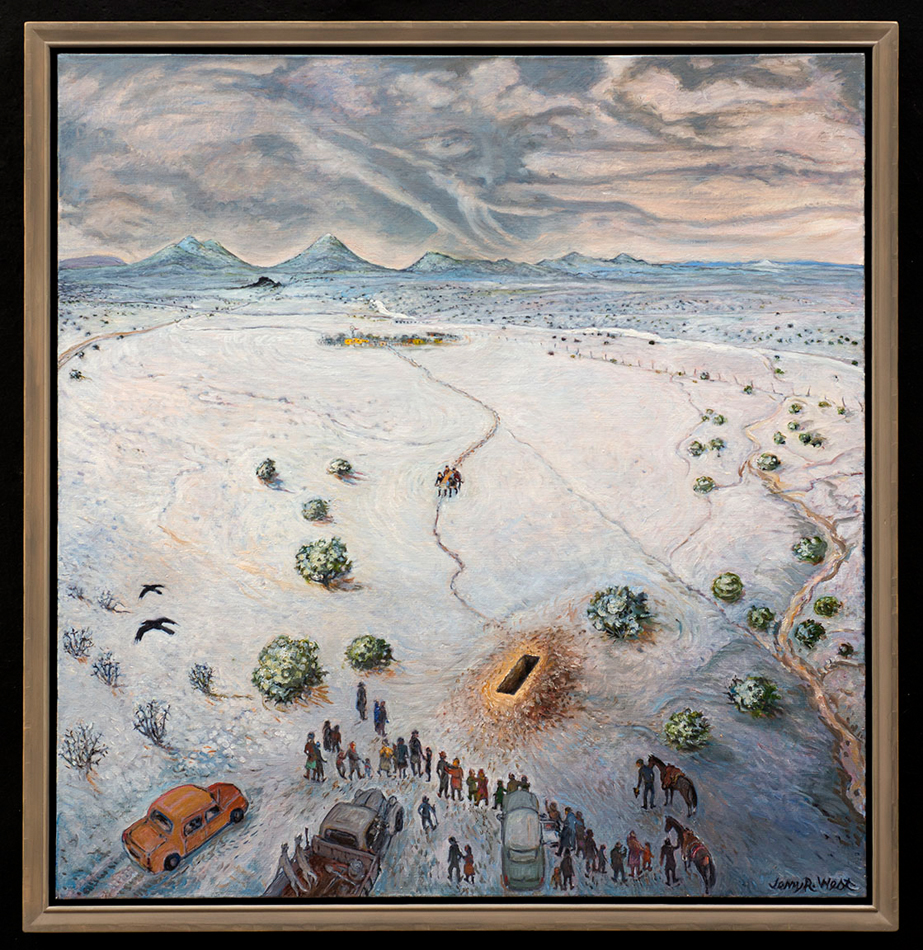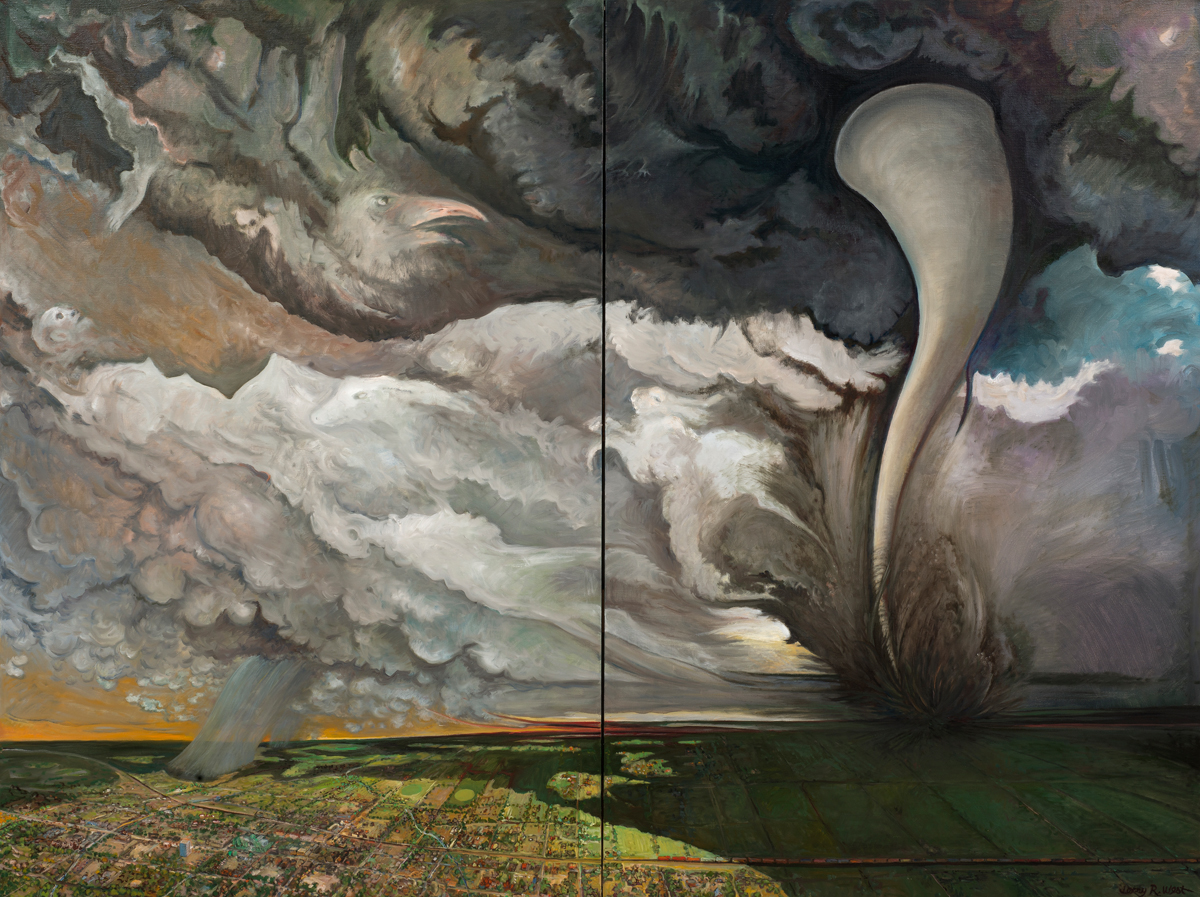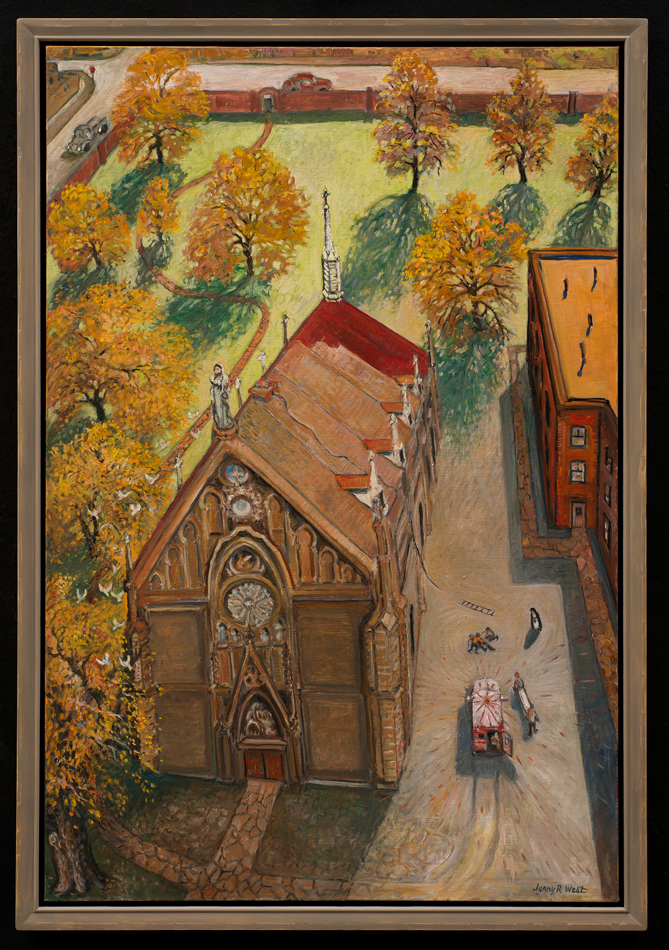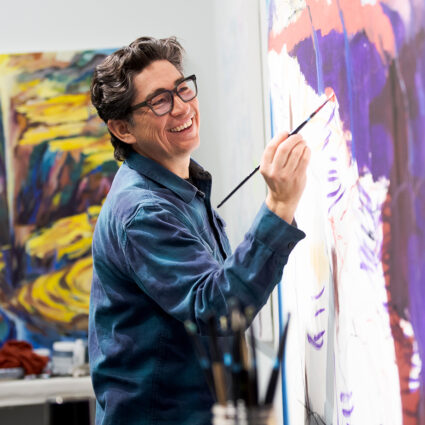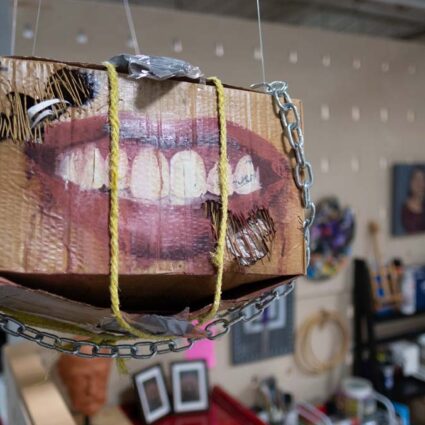Nonagenarian artist Jerry West on New Mexico homesteading, dream work, and adobe architecture as sculpture.
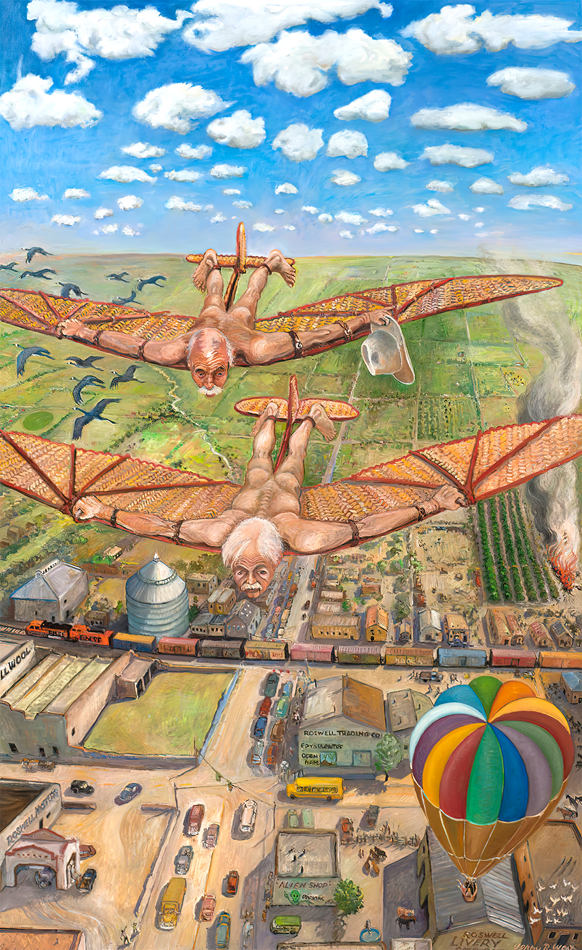
I’ve heard that when someone is really learning to speak a new language, they can dream in that new language. This was true to me because it happened when I was learning to paint. I was painting all day. At night, I carried on painting in a high-plains dreamland.
In 1987, after a critique at CU Boulder, my painting instructor Chuck Forsman suggested I look up Santa Fe painter Jerry West. At the library I struck out.
Years later, at the New Mexico Museum of Art, I finally found an original West. It was a luscious nocturne with a bird’s-eye view of a casita and corral on Cerrillos Flats. Within weeks, we met at a concert by Joe West, Jerry’s well-known son, and made a connection that continues three decades later.
Recently, I interviewed West by a wood stove, sipping a bowl of red chile stew, and I am grateful for his thoughtful and in-depth responses that often began with important family histories. This interview has been edited for length and clarity.
How did being raised on an isolated homestead about twenty miles south of Santa Fe influence the artwork you created?
It was a magic thing, our life on that little prairie world. We had the opportunity to be with the old sheepherders and sheep camps. Our home had very little to do with the people in Santa Fe other than school. We had a little radio with batteries, and we would listen to those silly shows like The Lone Ranger when we got home. We walked two miles to the bus… but it was a sweet period of our life. My brother John and I did a lot of walking and things like that.
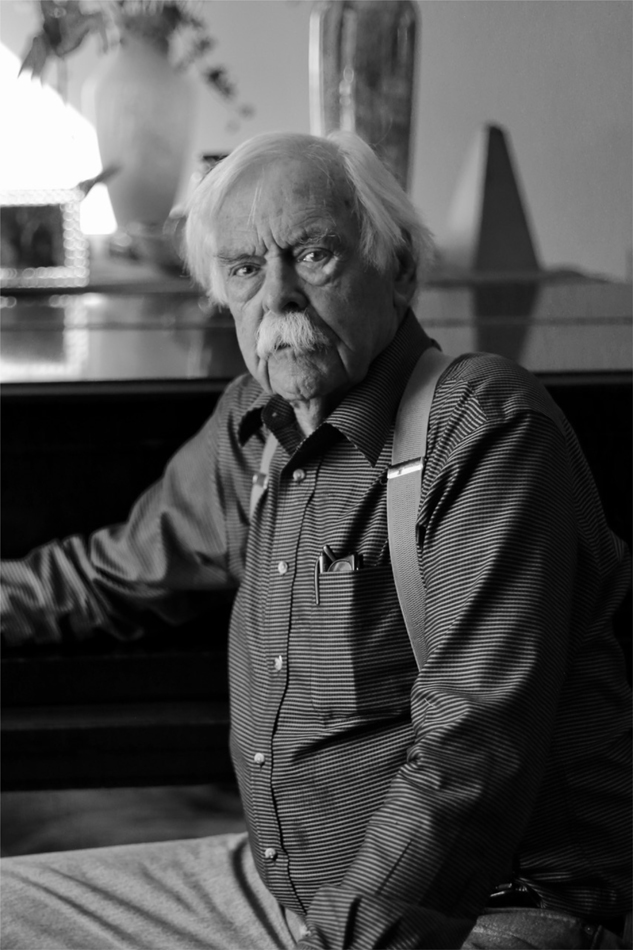
How did you come to use dream imagery, aerial viewpoints, and specific, local landscapes in your work?
Did you ever hear of [Jungian psychoanalyst] John Talley? He was just an Oklahoma guy that somehow got into psychology, dreams, dream work, and that type of thing. I think he was the most influential guy who encouraged me to paint. He said, paint your dreams. Everything that you see are dreams and a memory of this place. As a kid, I could fly. I don’t know why I was such a dreamer, but I started really early on. My earliest dream was flying over the old home place where we lived. I was the one who did the dreaming.
The earliest flight dream happened in the fall, when the tarantulas migrate. I was flying over the old place over here near La Cienega, and I took off, and I was flying, and then suddenly I realized I was flying over thousands of migrating tarantulas. Oh, my God!
I think a lot of dreams happen because of what was happening in the country around me. You know that it must be something more than a statement about the destruction of land, or the changes of land. I’ve given up because it’s changing so rapidly.
I’m doing my images of my dreams and my thoughts about New Mexico… because they’re interesting, because they’re very personal, you know. Obviously it’s nostalgic because the world is no longer that.
You’ve spent a lot of time shaping the land by building a number of adobe homes. Was there anything about the process of building a house that carried over into the process of building a painting?
Working with your hands and working with ideas. I loved the idea [that] building an adobe house is a little bit like sculpture. Also, every house that we built when I was starting to run these jobs, I got my artist friends to do. We always had a place for a mural in the entrance of the house or something like that.
Are you considering the current state of politics and making drawings or paintings of what you’re feeling or what you’re thinking about?
I probably will. I’ve been away from painting now for a couple of years, but I’m sure there’ll be something like that. I always like that little edge of reality.
